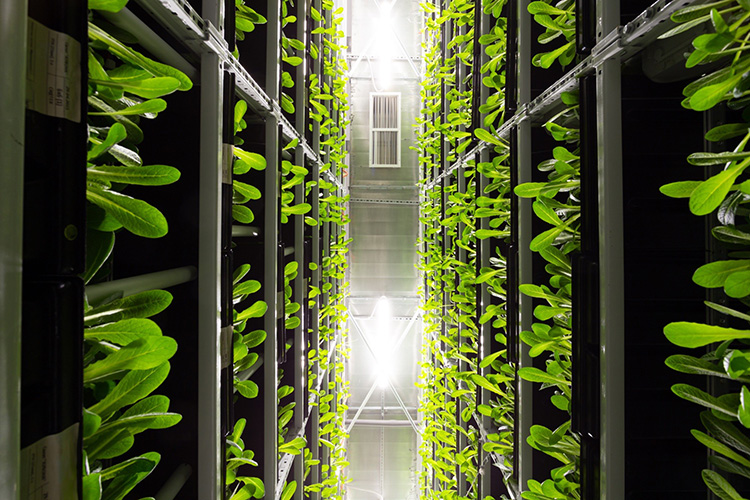Report on the 2025 Apulian Fig Harvest Crisis and its Implications for Sustainable Development Goals
1.0 Introduction and Summary
The 2025 summer “fioroni” fig campaign in the Apulia region of Italy has been severely impacted by adverse climatic events, including sudden frosts and heavy precipitation. This has resulted in substantial crop losses, threatening local economies and highlighting the vulnerability of agricultural systems to climate change. This report analyzes the situation through the lens of the United Nations Sustainable Development Goals (SDGs), demonstrating the direct challenges posed to food security (SDG 2), economic stability (SDG 8), and climate action (SDG 13).
2.0 Impact on Agricultural Production and Local Economies
Reports from local agricultural stakeholders indicate a catastrophic reduction in fig harvests, which directly undermines progress toward SDG 8: Decent Work and Economic Growth by jeopardizing the livelihoods of farmers and the economic stability of the region’s agricultural sector.
2.1 Reported Production Losses
- Francesco Palasciano, owner of Cuore Verde farm, reported a “significant fruit drop” leading to losses of up to 70% for the spring production.
- Michelangelo De Chirico, a sales manager, estimated an overall production drop of nearly 50%, attributing it to rising global temperatures and premature fruit dropping.
- Gaetano Modugno of Evergreen noted that heavy rains and hail compromised the quality of the early fruit, creating significant barriers to export.
This disruption to a key agricultural product threatens the viability of farming operations and impacts the entire supply chain, from local workers to international distributors. The potential need for farmers to abandon traditional crops further destabilizes the local economy and food systems, impacting targets within SDG 2: Zero Hunger, which aims to promote sustainable agriculture.
3.0 Climate Change as the Primary Driver
The crisis in Apulia is a clear manifestation of the challenges outlined in SDG 13: Climate Action. Stakeholders on the ground have identified climate change as the root cause of the crop failure.
3.1 Analysis of Climatic Factors
The primary issue is the increasing volatility of weather patterns, which disrupts traditional growing cycles. As stated by farmer Francesco Palasciano, “The real problem is climate change. The fig tree can no longer adapt to its former habitat.” The incident demonstrates how human-induced global temperature increases exacerbate extreme weather events, including:
- Unseasonal frosts that damage flowers and nascent fruit.
- Intense rainfall and hail that reduce the quality and quantity of the harvest.
- General temperature increases that disrupt the natural development cycle of crops.
These events show a direct failure to meet the objectives of SDG 13, which calls for urgent action to combat climate change and its impacts.
4.0 Broader Implications for Food Security and Supply Chains
The failure of a regional crop has ripple effects that extend to global food systems, impacting SDG 2: Zero Hunger and SDG 12: Responsible Consumption and Production. The interconnectedness of the global food trade means that a shortage in one region can lead to price increases and availability issues elsewhere. This event underscores the fragility of our food systems in the face of climate change and the need for more resilient and sustainable production models.
5.0 Recommended Strategies and Alignment with SDGs
Addressing the fig crisis and preventing future occurrences requires a multi-faceted approach grounded in the principles of sustainable development.
- Climate Mitigation and Adaptation (SDG 13): The long-term solution is to address the root causes of climate change by transitioning to cleaner energy sources and reducing greenhouse gas emissions. Concurrently, agricultural research must focus on developing climate-resilient crop varieties and farming techniques that can withstand climate variability.
- Sustainable Agricultural Practices (SDG 2): Promoting sustainable land management is critical. This includes methods that improve soil health, conserve water, and enhance biodiversity, making farms more resilient to climatic shocks.
- Responsible Consumption and Production (SDG 12): Consumers and policymakers play a vital role. Supporting local and sustainable farmers, reducing food waste, and advocating for policies that promote climate-resilient agriculture can collectively strengthen food systems and foster a more sustainable relationship between production and consumption.
Analysis of Sustainable Development Goals in the Article
1. Which SDGs are addressed or connected to the issues highlighted in the article?
- SDG 2: Zero Hunger: The article focuses on the devastation of the fig harvest, which directly impacts food production and availability. It discusses crop failure, reduced yields, and the threat to the global food system, all of which are central to the goal of ending hunger and ensuring food security.
- SDG 8: Decent Work and Economic Growth: The economic well-being of farmers is a key concern. The article states that the “lack of fresh figs is a critical issue for farmers whose livelihoods depend on these crops” and that extreme weather “impacts farmers’ incomes.” This connects the issue to the goal of promoting sustained, inclusive, and sustainable economic growth and decent work for all.
- SDG 12: Responsible Consumption and Production: The article suggests solutions that align with this goal, such as the need for “sustainable land management practices” and calls for individuals to “contribute to climate adaptation by reducing food waste.” This highlights the link between production patterns (agriculture) and consumption habits (food waste).
- SDG 13: Climate Action: This is the most explicitly stated SDG in the article. The text identifies that the “real problem is climate change” and links the crop failure directly to a “warming planet,” “extreme weather,” “unseasonal frosts, heatwaves, and heavy rainfall.” The proposed long-term solutions, like “transitioning to cleaner energy sources,” are core components of climate action.
2. What specific targets under those SDGs can be identified based on the article’s content?
- Target 2.4 (under SDG 2): “By 2030, ensure sustainable food production systems and implement resilient agricultural practices that increase productivity and production, that help maintain ecosystems, that strengthen capacity for adaptation to climate change, extreme weather, drought, flooding and other disasters…” The article directly addresses this by describing how extreme weather (frosts, rain) has devastated fig production and mentions the need for “resilient crops” and “new farming techniques” that can “better withstand climate variability.”
- Target 12.3 (under SDG 12): “By 2030, halve per capita global food waste at the retail and consumer levels and reduce food losses along production and supply chains, including post-harvest losses.” The article explicitly suggests that individuals can help by “reducing food waste,” which directly corresponds to this target’s aim to address waste at the consumer level.
- Target 13.1 (under SDG 13): “Strengthen resilience and adaptive capacity to climate-related hazards and natural disasters in all countries.” The entire article is an example of the lack of resilience and adaptive capacity in the Apulia region’s fig farming sector to climate-related hazards like “sudden frosts and heavy rains.” The discussion about developing “resilient crops” and new farming techniques is a call to action to strengthen this capacity.
3. Are there any indicators mentioned or implied in the article that can be used to measure progress towards the identified targets?
- Indicator for Target 2.4 & 13.1 (Direct agricultural loss): The article provides specific data that can serve as an indicator of agricultural loss due to climate-related disasters. It states, “Losses reached a staggering 70% for spring production in some areas,” and another expert “estimated a production drop of nearly 50%.” These percentages are direct measures of the impact of climate hazards on agricultural production.
- Indicator for Target 2.4 (Change in agricultural productivity): The article implies a decline in productivity by quoting a farmer who says, “Every year, it produces less.” This points to the indicator of agricultural yield or productivity, which is being negatively affected by climate change.
- Indicator for Target 8 (Impact on livelihoods): While not a formal UN indicator, the article’s focus on how the crisis “impacts farmers’ incomes” and threatens their “livelihoods” implies that a relevant metric would be the change in income and economic stability of agricultural producers in the affected region.
4. Table of SDGs, Targets, and Indicators
| SDGs | Targets | Indicators |
|---|---|---|
| SDG 2: Zero Hunger | Target 2.4: Ensure sustainable food production systems and implement resilient agricultural practices. | – Percentage of crop loss (mentioned as “70%” and “nearly 50%”). – Decline in agricultural productivity (implied by “Every year, it produces less”). |
| SDG 8: Decent Work and Economic Growth | Promote sustained, inclusive and sustainable economic growth, full and productive employment and decent work for all. | – Impact on farmers’ incomes and livelihoods (implied by the statement that the crisis “impacts farmers’ incomes”). |
| SDG 12: Responsible Consumption and Production | Target 12.3: By 2030, halve per capita global food waste. | – Level of food waste at the consumer level (mentioned as a solution: “reducing food waste”). |
| SDG 13: Climate Action | Target 13.1: Strengthen resilience and adaptive capacity to climate-related hazards. | – Direct agricultural loss attributed to disasters (quantified as “70%” and “nearly 50%” production drops due to frost and rain). |
Source: yahoo.com







